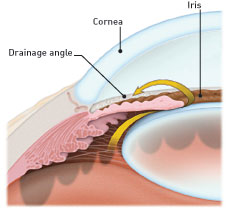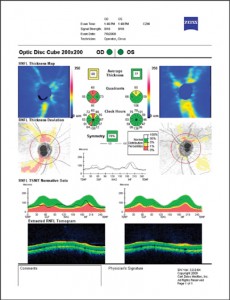
Glaucoma is a disease that damages the eye’s optic nerve. The optic nerve is connected to the retina — the tissue lining the back of the eye. The optic nerve is made up of many nerve fibers, similar to an electric cable made up of many wires. The optic nerve sends signals from your retina to your brain, where these signals are interpreted as the images you see.
Glaucoma causes damage to the optic nerve and therefore the signals which are sent to the brain. The most common form of glaucoma is chronic open angle glaucoma and is completely painless. You cannot tell you have this type of glaucoma until you lose much of your vision, and unlike vision lost with cataract, it is irreversible. . . the vision lost can never be regained. The only way to determine if you have glaucoma is through an eye examination. Measuring eye pressure is not enough as almost 40% of people with glaucoma don’t have elevated eye pressure.
The incidence of glaucoma increases as you age and if you have a family history of glaucoma. It is important to have eye examinations more frequently as you enter middle age or if someone in your family has had the disease.
There are several tests which can be used to determine if you have glaucoma and, if you have it, to determine if it is progressing. One of the newest methods of following the disease is the OCT scanner of the thickness of the retina’s nerve fiber layer. The picture below shows a scan of a patient’s optic nerve who has glaucoma.

For more information from AAO Eye Health click on:
Glaucoma
AAO Eye Health A-Z
